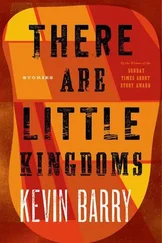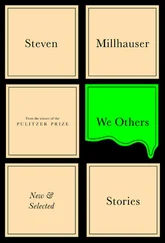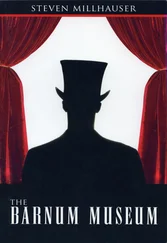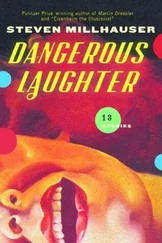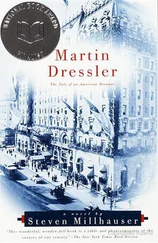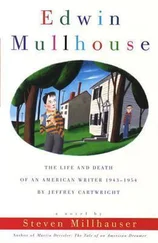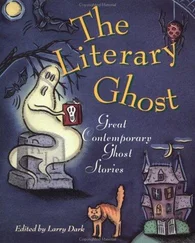“Easy come, easy go,” Max said with a shrug. He glanced at a passing girl, who glanced back, and Franklin, who had assumed he’d been speaking of the man in the white towel, suddenly wondered whether Max had meant the girl, or Dime Museum Days , or something else entirely.
But he had to admit, as the world vanished behind his study in swirls of falling snow, that Max might have been right. To the clack of a rented projector Franklin watched his moving pictures night after night on a wall of the tower study while snow fell steadily, and the repeated viewings revealed new flaws. It wasn’t simply a matter of occasional irritating technical lapses, as when, for instance, despite his system of crossmarks, he had failed to register the drawings precisely; rather it was a question of whole sequences needing to be reimagined. Max thought he was being overly fussy, and Max was probably right. But just outside his window Nature was being far more fussy, far more finicky and precise. The swirling lines of snow were composed of separate flakes, and each flake was a cluster of separate ice crystals — scientists had counted over a hundred of them in a single flake. Under the microscope each minuscule crystal, colorless and transparent, revealed a secret symmetry: six sides, the outward expression of an inward geometry of frozen molecules of water. But the real wonder was that no two crystals were precisely alike. In one of his father’s camera magazines he had seen a stunning display of photomicrographs, and what was most amazing about the enlarged crystals was that each contained in its center a whole world of intricate six-sided designs, caused by microscopic air pockets. For no conceivable reason, Nature in a kind of exuberance created an inexhaustible outpouring of variations on a single form. A snowstorm was a fall of jewels, a delirium of hexagons — clearly the work of a master animator. Max, mocking his endless labor, would have done better to direct his scorn at the falling snow. But Max had made Franklin thoughtful as well as irritable. Why this obsessive fiddling, when after all he was a professional used to working quickly under the pressure of rigorous deadlines? Perhaps the answer was this, that for once in his life he preferred to be an amateur. In this realm, at any rate, he was one whether he liked it or not. But there was also something else, something more elusive that he couldn’t quite get at but that had to do with entering a place that made you feel you were somehow at the center — though at the center of what, Franklin wasn’t sure.
The snow stopped, leaving great drifts that covered the porch steps and swept up to the parlor windowsills; and again the snow came down, burying the world in billions of glittering but invisible six-sided designs. On the cold kitchen windows Franklin showed Stella elegant frost-drawings: spines and needles of ice, ice ferns and ice feathers, ice filings flung over the field of an unseen magnet. Then the sun came out, and there was a great melting and dripping: artful icicles two feet long hung from the porch eaves, transforming the storm-darkened porch into a sunny cavern of glistening and transparent stalactites, all dripping into the snow, all lengthening stealthily as each falling drop partially froze on the gleaming tips. Suddenly an icicle fell, plunging point-first into the snow and vanishing. A small dark bird, startled, flew into the brilliant blue sky and melted away. And again it snowed, and again the sun came out. In the mornings on the way to the station Franklin counted the new snowmen that had sprung up mysteriously overnight or the old ones that had been stricken with disease and lay cracked apart — a head here, a broken body and three lumps of coal there — and one day he looked up from a piece of snow-colored rice paper and knew he was done. It was as simple as that: you bent over your work night after night, and one day you were done. Snow still lay in dirty streaks on the ground but clusters of yellow-green flowers hung from the sugar maples. Franklin delivered the 4,236 drawings, of which nearly 2,000 were entirely new, to Vivograph himself, then screened the film alone. Only after that did he invite Max to a viewing — and now it was Max’s turn to confess that Franklin had been right all along, that the reworked version was superior in every way. “Though I suppose you’ll want to take it back and redo it again,” he added. Franklin was startled. “Well, no. No. Why? Is there something wrong?”
Dime Museum Days , animated by J. Franklin Payne, produced by the Vivograph Company, and distributed by National Pictures, opened on 1 May in theaters across the country, from Grauman’s in Los Angeles to the Rialto in New York, as part of a weekly news-travelogue-cartoon supplement. Franklin and Max watched it in the Strand, where the audience burst into applause, and reports from the Abe Blank theaters in Nebraska, from the Karlton in Philadelphia, from the Finkelstein and Reuben chain in Minneapolis and St. Paul, all confirmed the sense of a heady success. Reviews in the film trade journals did not know which to praise more, the meticulous artistry or the haunting fantasy; and with amusement Franklin showed Max a review that, after summarizing the plot, declared that Payne’s scrupulous draftsmanship in the service of a grotesque dream-vision separated his animated cartoon from the ephemeral products of the day and lifted it into the region of art.
Three days after the opening Franklin was asked to report to the office of Alfred Kroll, managing editor and chief editorial writer of the New York World Citizen. Kroll’s office was located at the end of a darkening corridor on the fourth floor, behind a dingy door whose upper glass pane was covered on the inside by perpetually closed Venetian blinds. Franklin, walking along the darkening corridor, wondered whether the darkening effect was accidental or, as he preferred to think, a brilliant strategy meant to summon up deep childhood fears. Kroll, who had signed the letter that had brought Franklin from Cincinnati, was second in command to the invisible owner of the paper, Charles Harlan Hanes, whose office was located at the end of an even darker corridor behind an even dingier door, and who was said by Max to be one hundred ten years old and to be composed entirely of artificial parts. Hanes, according to Max, had hired Kroll to keep a tight grip on the World Citizen in all its departments, to express Hanes’s views in editorials and their attendant cartoons, and to fire anyone who slacked off, was uncooperative, or seemed lukewarm in the service of World Citizen ideals. Exactly what those ideals were, it was difficult to say, since the paper regularly attacked both big business and government while remaining violently patriotic, and advocated an isolationist foreign policy while asserting the moral responsibility of the United States in the wake of the new world order. According to Max, Kroll was Hanes’s flunkey pure and simple, but Franklin’s sense of the man was more complex: he believed that Kroll had been hired because he had strong views of his own, which happened to be exactly those of Charles Harlan Hanes. He might shade an opinion slightly in deference to his boss, but he was never required to express an opinion in which he did not believe; and it was precisely his belief that gave his editorials a kind of crude passion they would otherwise have lacked, and made him a force to be reckoned with in his own right. Kroll was also known to enjoy certain freedoms in return for his loyal service, among them virtual control over the comic strips of the daily editions and the color comics of the Sunday supplement. Approval by Kroll could mean for a strip a chance it might otherwise not have.
As Franklin continued along the always-darkening corridor, he tried to foresee his meeting with Kroll, which almost certainly had to do with his animated cartoon. He felt both uneasy and cautiously hopeful — uneasy because a summons from Kroll usually, though not invariably, meant trouble, and cautiously hopeful because his cartoon had been a success, and Kroll liked success — and as he pushed open the door, rattling the blinds, he was surprised once again by the perpetual twilight of the reception room, with its one window covered by closed blinds, its tarnished brass floor lamp with a tasseled shade, and its faded secretary with sharp shoulders and thin, reddish nostrils, who looked up at Franklin and then at Kroll’s door as if a disturbing connection between the two were slowly dawning on her. Franklin, who had expected to wait, was told to enter immediately.
Читать дальше



